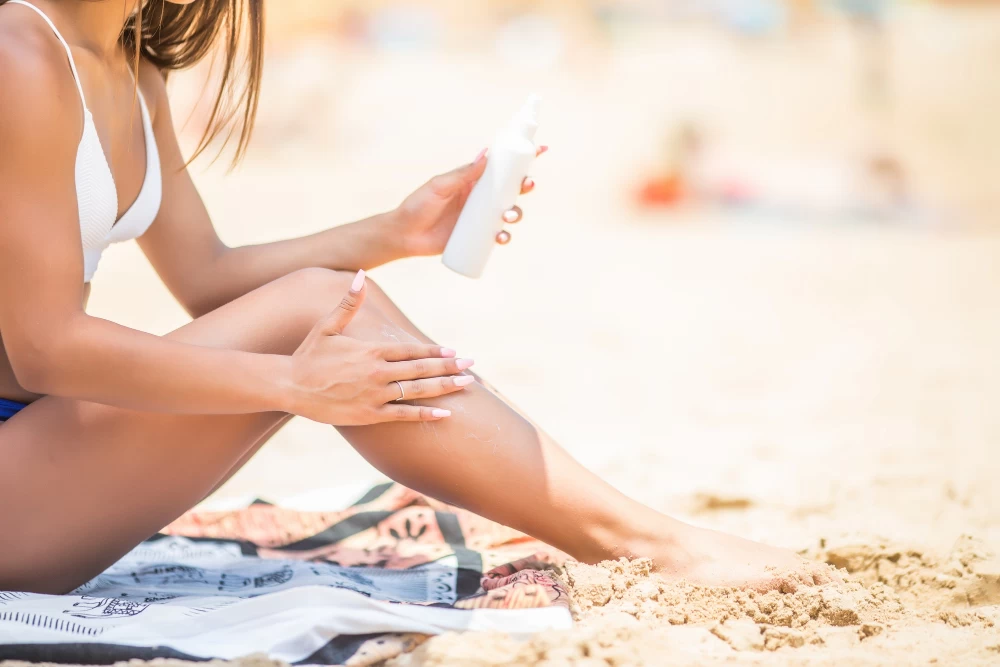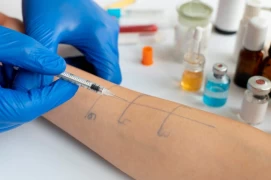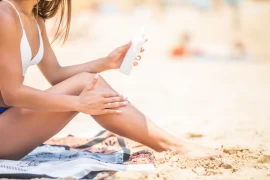
About Sunscreens
- About Sunscreens
- What are sunscreens and what are they good for?
- What Is the 'Factor' in Sunscreens?
- What are the Types of Sunscreens?
- What is the Most Appropriate Application Method and Time for Sunscreens?
What are sunscreens and what are they good for?
Sunscreens are products used to protect against the sun's harmful UV (ultraviolet) rays. These rays can cause various health problems on the skin. Sunscreens are used to protect the skin from these harmful effects and have the following functions:
- Absorb or Reflect UVB and UVA Rays: Sunscreens can absorb or reflect the harmful effects of the sun's UVB and UVA Rays on the skin, thanks to the active ingredients they contain. This reduces the risk of skin sunburn, early signs of aging, skin cancer and other skin damage.
- Creating a Physical Barrier to the Sun: Some sunscreens contain active ingredients such as zinc oxide or titanium dioxide. These components form a thin layer on the skin, physically reflecting the sun's rays and preventing them from coming into contact with the skin. This protects the skin by creating a barrier against the sun.
- SPF (Sun Protection Factor) and UVB Protection: Sunscreens have an SPF value on them. The SPF value indicates the sunscreen's ability to protect the skin against UVB rays. For example, a sunscreen with SPF 30 means the skin can withstand exposure to the sun 30 times longer than normal. SPF helps protect the skin against the sun, reducing the risk of sunburn.
- Protecting Skin Health: Sunscreens reduce the risk of skin problems caused by sun exposure, such as skin cancer, skin blemishes, early signs of aging, and wrinkles. Since UV rays have the potential to cause DNA damage to the skin, sunscreens protect the health of the skin by preventing such damage.
Regular and correct use of sunscreen is important. It should be applied at least 15-30 minutes before going out in the sun and should be repeated regularly when exposed to the sun. In addition, the choice of sunscreen should be made in accordance with the skin type and needs.
What Is the 'Factor' in Sunscreens?
The "factor" or "protection factor" (Sun Protection Factor - SPF) in sunscreens is a measure of the sunscreen's ability to protect the skin against UVB (Ultraviolet B) rays. The SPF value indicates how long the sunscreen can protect the skin against sunburn.
While the SPF value reduces the risk of sunburn caused by UVB rays, it does not measure protection against UVA (Ultraviolet A) rays. UVB rays are associated with an increased risk of skin rash, sunburn, and skin cancer, while UVA rays can lead to skin aging and wrinkles. That's why it's important to choose sunscreens that offer broad-spectrum protection. Broad spectrum protection refers to products that protect against both UVB and UVA rays.
The SPF value indicates the time it takes for a sunscreen to protect the skin from sunburn. For example, a sunscreen with SPF 30 means the skin can withstand exposure to the sun 30 times longer than normal. However, this period may vary from person to person and depending on the intensity of the sun.
The duration of protection obtained with a sunscreen is calculated by multiplying it by the SPF value. For example, with a sunscreen with SPF 30, the protection time is multiplied by 30. So, with a product with SPF 30, a skin that would normally get sunburned in 10 minutes can be exposed to the sun for 300 minutes (30 x 10).
However, this calculation is valid under ideal conditions and factors such as amount of application, perspiration, exposure to water and constant friction can affect it. For this reason, it is important to apply sunscreen regularly and in adequate amounts, to repeat it at the specified times and to continue to be protected throughout the duration of sun exposure.
What are the Types of Sunscreens?
Sunscreens can be found in various types, with different formulas, consistencies and ways of use. Here are some common types of sunscreen:
- Cream: Sunscreen creams are the most commonly used type of sunscreen. The cream formula spreads and gets absorbed easily into the skin. It usually varies in accordance with different SPF values and skin types.
- Lotion: Sunscreen lotions have a cream-like consistency but are slightly more liquid. Lotions provide protection against the sun while moisturizing the skin.
- Gel: Sunscreens in gel form have a light and fast-absorbing structure. They are generally preferred for oily or acne-prone skin, as they are non-oily and light.
- Spray: Sunscreen sprays are available in the form of a fine spray that can be easily applied by squeezing or spraying mechanisms. Sprays are generally preferred because they can be applied to large areas of the body.
- Stick: Sunscreen sticks are designed for sensitive areas such as lips, nose, cheeks and around the eyes. The stick formula facilitates direct application and adheres better to the skin.
- Foam: Sunscreen foams have a light and fast-absorbing formula. It spreads easily and is quickly absorbed by the skin.
- Powder: Sunscreen powders are available in the form of a fine powder. It can be presented with different color options and can be applied over make-up.
Also, sunscreens are often specially formulated for various skin types and needs. For example, they range from mattifying sunscreens for oily skin to fragrance-free or chemical-free sunscreens for sensitive skin. When choosing, it is important to choose the one that suits your skin type, needs and preferences.
What is the Most Appropriate Application Method and Time for Sunscreens?
Applying sunscreens correctly and following a certain schedule are important to provide effective protection. Here is information about the most appropriate application form and time of sunscreens:
- Method of Application:
- Cleansing Skin: Before applying sunscreen, clean and dry your skin. Dirt, sweat, oil, and cosmetic products can reduce the effectiveness of sunscreen.
- Adequate Amount: It is important to apply the sunscreen adequately to the skin. Usually, 1 handful (about 30 ml) of sunscreen cream or lotion is enough to cover the whole body.
- Evenly Distribute: Distribute the sunscreen evenly on the skin. Apply to all exposed areas and without neglecting the face, neck, arms, legs and other body areas. You can choose to use different types of sunscreen products (for example, a separate product for the face) on targeted areas.
- Sensitive Areas: Do not neglect sensitive areas such as lips, ears, nose and eye area. It may be easier to apply sunscreens in stick or balm form to these areas.
- Application Time:
- Pre-Application: Applying sunscreen 15-30 minutes before sun exposure increases the effectiveness of protection. This allows time for the sunscreen to be absorbed into the skin to begin protecting the skin from the sun.
- Regular Renewal: It is important to renew the sunscreen regularly. It is generally recommended to reapply every 2 hours. You may need to renew more frequently when sweating or exposure to water occurs during the activity.
- Towel Wipe: Wiping the skin with a towel or clothing can cause sunscreen to be removed. In these cases, it is important to reapply sunscreen.
- Sun Exposure Time:
- Sun Intensity: During the peak hours of the sun (usually between 10:00 and 16:00), it is important to reduce the amount of sun exposure. During these times, the sun's UV rays are stronger and can damage the skin.
- Skin Type: Skin types differ in terms of sun exposure time. People with lighter skin, white or red hair, and those with freckles are more sensitive to the sun and should be limited to shorter periods. People with darker skin may be exposed to the sun longer, but should still take protective measures.
- SPF Value: The SPF value of your sunscreen also affects the time you are exposed to the sun. The higher the SPF value, the longer you can protect your skin against sunburn. But that doesn't mean you can be exposed to the sun indefinitely. It is important to renew sunscreen regularly.
- Environmental Factors: Weather conditions also affect the duration of sun exposure. Even on cloudy days, UV rays can reach the skin, so it's important to use sunscreen on cloudy days as well. Also, sun exposure is more intense at high altitudes or where there are reflective surfaces such as water or sand.
- Personal Tolerance: Everyone's skin is different and their personal tolerance to the sun may also differ. Carefully monitor how your skin reacts and adjust the sun exposure time according to your own experience.
As a result, the duration of sun exposure varies from person to person. In general, it's important to start short and use sunscreen during peak sun hours. You can use dermatologists to choose the most suitable sunscreen for your skin type.





